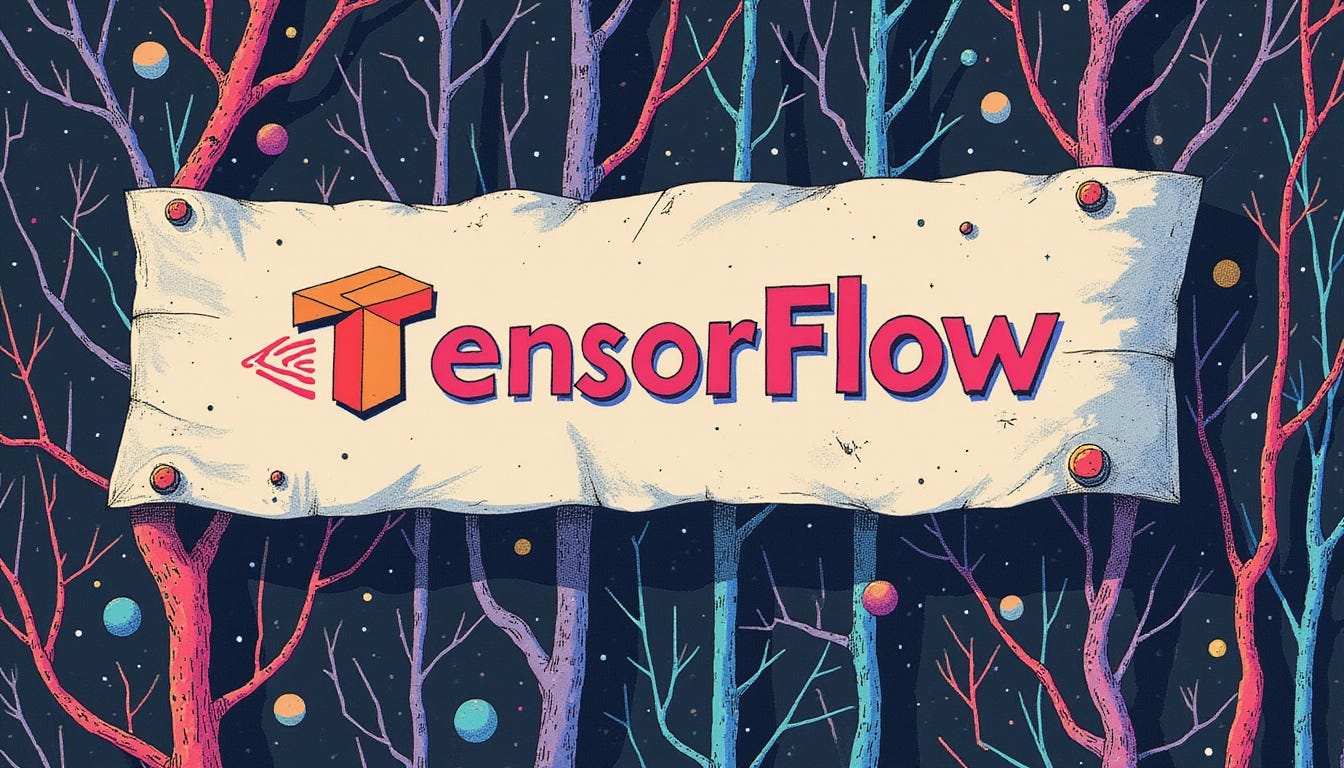TensorFlow: A Comprehensive Guide for Machine Learning
From Basics to Advanced Applications and Deployment
TensorFlow is a powerful, versatile, and open-source machine learning framework developed by Google. It provides a flexible and scalable platform for building and deploying machine learning models across various platforms, including CPUs, GPUs, TPUs, mobile devices, and distributed computing environments. This framework supports a wide range of applications, from simple classification tasks to complex deep learning models. The TensorFlow ecosystem is also supported by a large and active community of developers, researchers and contributors.
Machine Learning Fundamentals:
Machine learning, a subset of artificial intelligence, involves developing algorithms and statistical models that allow computers to perform tasks without explicit programming. Instead, machines learn from data and make their own decisions.
There are three main types of machine learning:
▪ Supervised learning: Algorithms learn from labeled data, where each input data point is associated with a corresponding target label. This is used for tasks like classification and prediction.
▪Unsupervised learning: Algorithms learn from unlabeled data, finding inherent structures or relationships within the data, such as clusters and anomalies. This is used for tasks like customer segmentation and anomaly detection.
▪Reinforcement learning: Algorithms learn to make decisions by interacting with an environment to maximize cumulative rewards.
Core Architecture Components
TensorFlow's architecture is built around several key components:
a) Tensors and Operations
Tensors: N-dimensional arrays as your basic data structure
Operations: Mathematical transformations on tensors
Computational Graphs: Your model's blueprint
b) Framework Layers
TensorFlow Core: The foundation layer
Keras API: High-level model building
TF Extended (TFX): Production pipeline management
TF Lite: Mobile and edge deployment
Neural Network Support
TensorFlow excels in neural network implementations:
a) Network Types
Feedforward Networks: Your basic building blocks
CNNs: Perfect for image processing
RNNs: Handling sequential data
GANs: Generating synthetic data
b) Essential Components
Activation Functions: ReLU, Sigmoid, TanH
Loss Functions: Guiding optimization
Optimizers: Fine-tuning parameters
Advanced Capabilities
The framework extends beyond basics:
Distributed Computing: Scale across hardware
Transfer Learning: Leverage pre-trained models
Custom Layers: Build specialized architectures
Real-World Applications
TensorFlow powers various applications across industries:
Computer Vision
Image classification
Object detection
Facial recognition
Natural Language Processing
Sentiment analysis
Language translation
Text summarization
Time Series
Financial forecasting
Weather prediction
Anomaly detection
Key Takeaways
TensorFlow offers both high-level APIs for rapid development and low-level control for customization
The framework scales seamlessly from research to production
Built-in support for modern neural architectures makes implementation straightforward
The ecosystem includes tools for every stage of the ML lifecycle
Strong community support ensures continuous improvement and resources
Want to Master TensorFlow?
Ready to dive deeper? I recommend the following learning path:
Start with TensorFlow Fundamentals course here
Practice with hands-on projects in the TensorFlow playground
Work through the TensorFlow Developer Certificate curriculum
Join the TensorFlow community on GitHub
Pro Tip: Start with the high-level Keras API to get comfortable with the framework, then gradually explore lower-level APIs as you need more control over your models.



